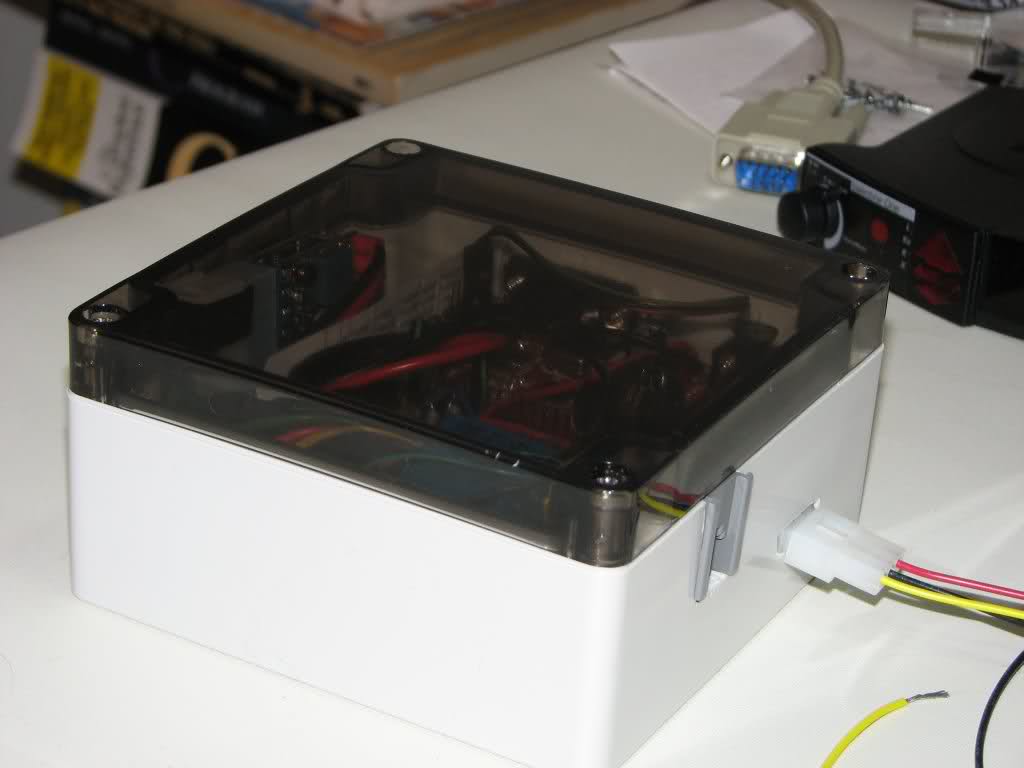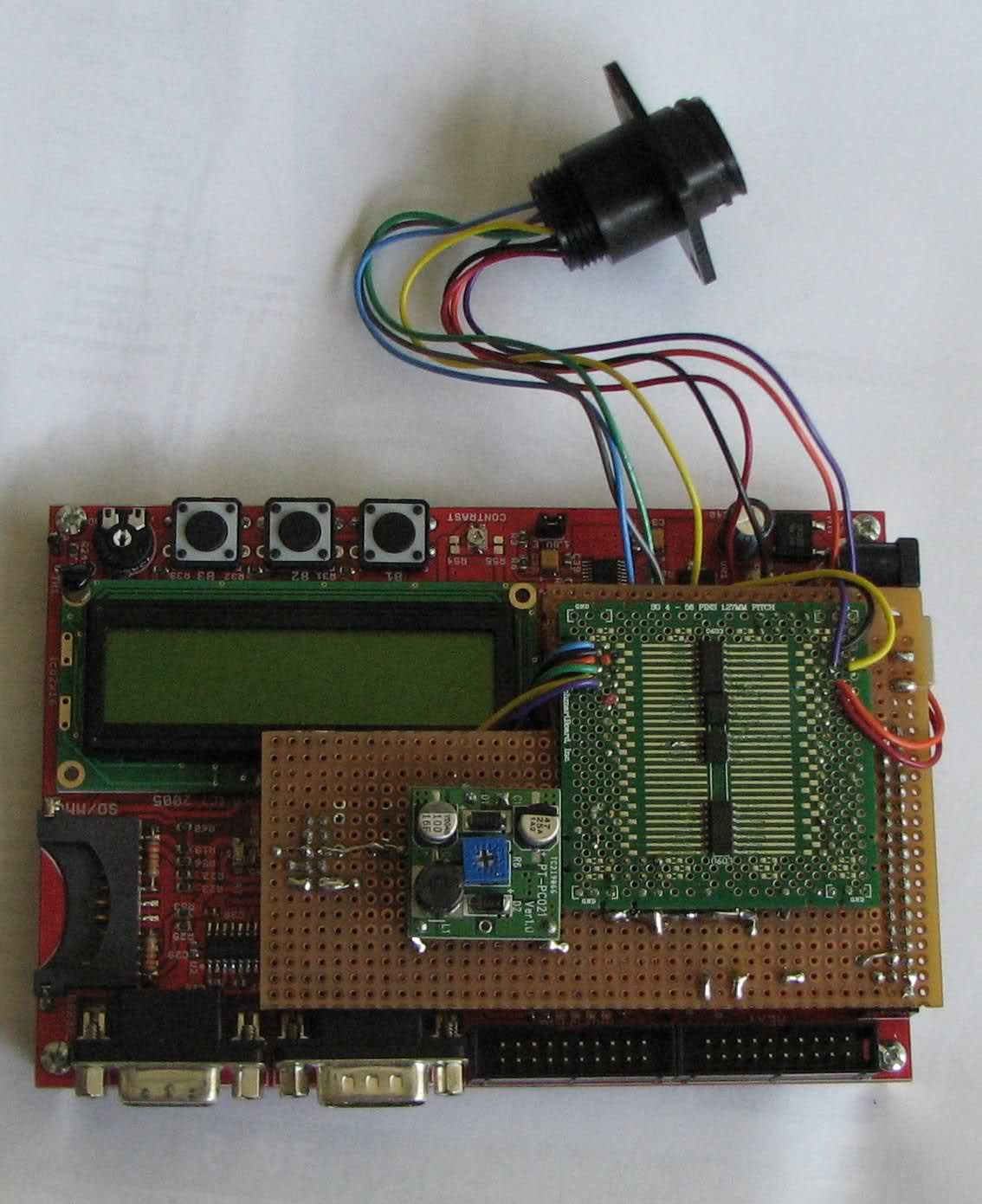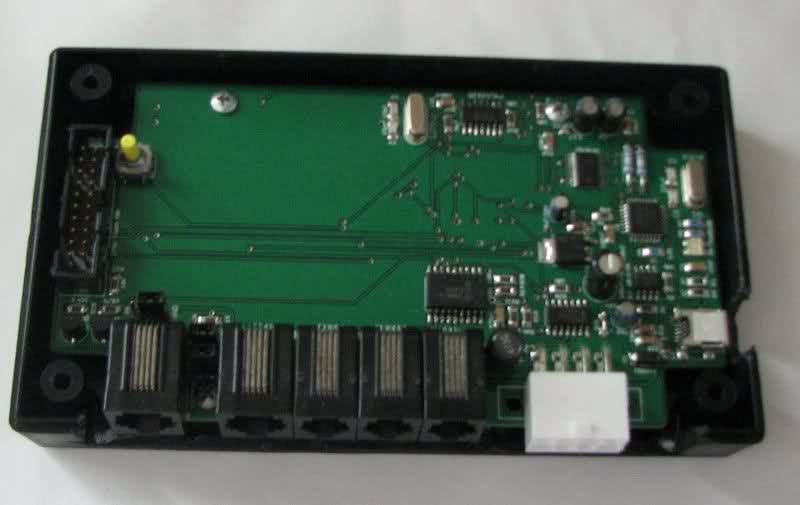Projects > HUD
One > History
Developing the HUD One
When I was
shopping for a C6 Corvette back in 2005, I made sure the one I
selected was equipped with a HUD. I have always thought that the
HUD was not only extremely cool but exceptionally useful, allowing
my to keep my eyes on the road most of the time. 2005 was the
first year of production for the C6, and My Millennium Yellow
dream car attracted lots of attention - not all of it desirable.
After collecting a couple of speeding tickets, I decided to invest
in a RADAR detector; after much research, I purchased and installed a Valentine One. The
Valentine One supports an external "concealed" display, which can
be mounted discreetly inside the car while the main V1 unit is
left with a good view of the road. Since the C6 HUD is capable of
displaying turn-by-turn directions from the car's navigation
system, I began to wonder what it would take to display the output
of the V1 on my HUD. So in early 2008 I set out to do precisely
that.
The first step was to determine how to communicate with the HUD
and tell it what to display. By studying the service manuals for
the car, I quickly determined that the HUD is connected to the
rest of the car via what GM calls the "Class 2 bus." This
communications bus is based on a SAE (Society of Automotive
Engineers) standard called J1850,
and there is a lot of information publicly available regarding
that standard. J1850 owes its existence to the EPA (Environmental
Protection Agency), CARB (California Air Resources Board), and
legislation that required all cars to provide a standard interface
for smog check equipment. The automakers realized that the J1850
bus could benefit them, as well: by installing small embedded
microcontrollers into their cars and connecting them together
using the J1850 bus, the automakers were able to not only satisfy
the regulatory requirements but also to
replace miles of dedicated wiring, relays, and other
circuitry. This increased reliability, saved weight, and cut
manufacturing costs. It was a win for everybody involved.
Although the
basic protocol and the messages relating to diagnostic and smog
test functions are well documented and publicly available, the
other functions use proprietary messages which are not publicly
documented. Of course, the HUD communication falls into this
latter category. In order to "talk" to the HUD, it would be
necessary to reverse-engineer these undocumented messages. This
part alone took several weeks using an OBD-II scan tool with
passive monitoring capability and custom software that I wrote to
log and decode the traffic on the Class 2 bus. While Class
2 bus analyzers are commercially available, they are targeted at
automobile manufacturers and their suppliers, not at hobbyists, and
have price tags that hobbyists cannot afford. Thus, I had to develop
my own software to capture and analyze the Class 2 bus traffic.
I also
needed to understand the display protocols used by the RADAR
detectors. The Valentine One external display protocol was
published by Valentine Research long ago and is readily available
on the net. The 9500ci also has an external display module, but to
my knowledge its protocol has not been published. Decoding this
required another few weeks of reverse-engineering effort.
Next I
needed a small embedded system on which to run the HUD-One
application. For this first
attempt, I decided to use as many off-the-shelf hardware
components as possible. I settled on an LPC-P2103 development
board from Olimex. The LPC2103 has 5V-tolerant I/O (important for
interfacing with the V1), and the board has a small prototyping
area which turned out to be extremely handy. I already had all the
necessary development tools from a previous project, which was
also a plus.
I then
selected an LDV6S to serve as the
interface to the in-car network. Unlike most OBD-II interfaces which
use the clunky ELM command protocol, the LDV6S uses a unique
binary protocol and had other features which seemed to make it
well-suited to this application. To power it all I used an
M3-ATX power supply. Total overkill, but
after spending several weeks screwing around with other power
supplies that didn't work well in the challenging automobile
environment, I decided to bite the bullet and use something that I
knew would work.
This is my
original prototype for the HUD-One:
Of course,
there were some problems which had to be worked out. For example,
when I first hooked the fledgling HUD One up to the Class 2 bus, I
discovered that the LDV6S would jam the bus while it was powering
up, preventing the car from even starting(!!!) I had to isolate
the bus connection with a relay before it would even work. On top
of that, although the LDV6S has a "bus monitor" mode where it
"sniffs" all traffic on the Class 2 bus and forwards that through
its serial port, it has to exit this mode in order to transmit a
message - which means that any messages that appear on the bus
during the time when monitor mode is turned off will be missed.
This could definitely cause me problems down the road.
Realizing that the commercial off-the-shelf OBD-II scan tool wasn't
going to work out for this application, I set out to learn how the
OEM nodes interface to the bus. I found that they employ interface
chips such as the AU5780
which
are specifically designed to interface with the bus in a fail-safe
manner. These devices are also full-duplex, and can transmit and
receive messages at any time without cumbersome mode switching or
lost packets.
I also found
another microcontroller, the TMS470, that has a built-in Class 2
controller peripheral called a C2SIB. This peripheral is much like
the UART used for RS-232 serial communications: it takes care of
all the physical layer bit-banging in hardware, and presents a
byte-oriented interface to the microcontroller. I ordered a demo
board based on the TMS470R1A256, and then cobbled together a small
daughtercard which would provide the physical interface to the
Class 2 bus.
While this
approach worked much better than my first try, anything beyond the
proof-of-concept would require custom hardware. As you can see
from the pictures, designing circuits and laying out
PCBs is not my strong suit.
Fortunately,
another C6-owning hobbyist saw my message board threads about the
HUD One and offered to design a circuit board to my
specifications. After many more months of work, including a
several-month wait for some critical parts, this was the result:
This new
board has proper connectors for both the
Valentine One and the 9500ci RADAR detectors, as well as a
USB port for future upgrades.










